No. 01 Trang Tien, Trang Tien, Hoan Kiem
(+84) 243.933.0113
http://www.hanoioperahouse.org.vn/
hnopera@hanoioperahouse.org.vn
Hanoi Opera House is a project built by the French government in the early years of the 20th century. Its construction started in 1901 and completed in 1911.
Where we are sitting formerly was a wetland area belonging to two villages Thach Tan and Tay Luong – Phuc Lan – Tho Xuong District. In 1899, the city council held a meeting under the chairmanship of Richard – Hanoi’s envoy who proposed to build up the Theatre.
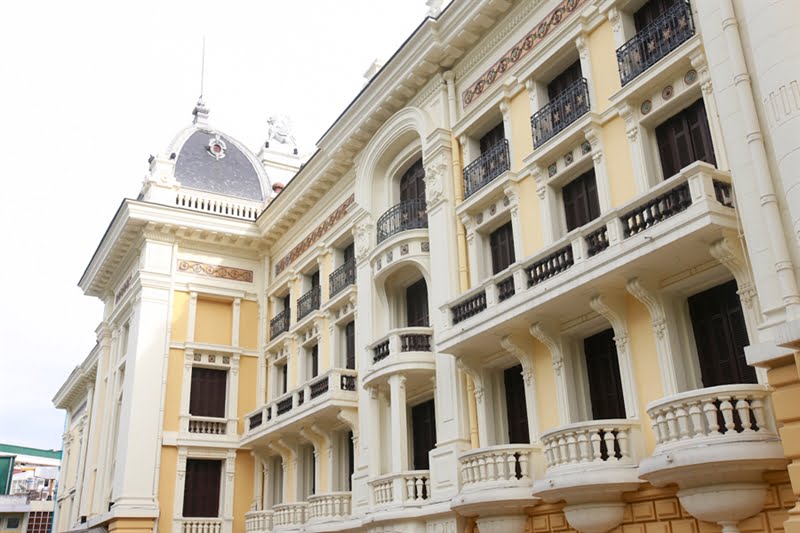
Two architects Harlay and Broyer are designers of the Project. The design was under much modification due to comments of many other architects.
The works started on June 7, 1901, under technical supervision of an urban inspector – architect Harlay – one of the two designers. The persons in charge of construction were two men Mr. Savelon and Mr. Travary.
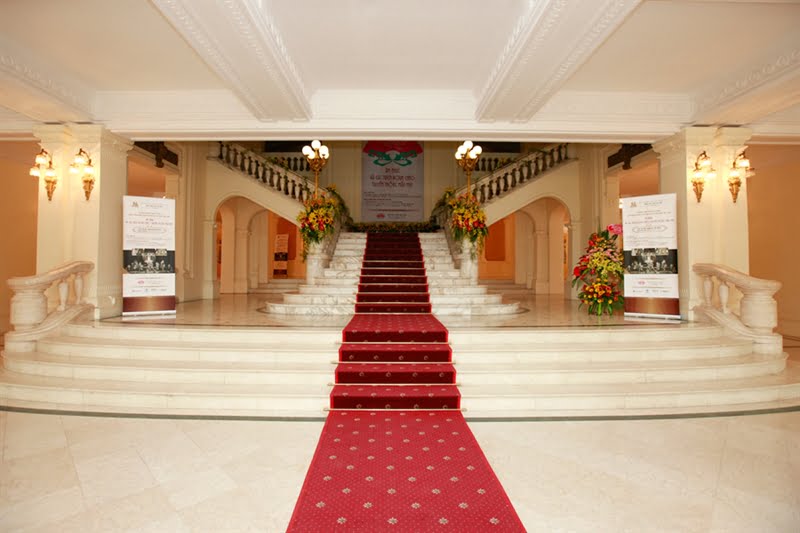
The embankment was very strenuous. 300 workers were working every day, with 35,000 bamboo poles and concrete blocks of 90cm thick. The works needed to use more than 12000m3 of materials, nearly 600 tons of iron and steel, with construction area of 2600m2, 87m in length, 30m in width and the highest point of the building is 34m from the ground surface. The façade of the building is very superficial with many steps overlooking the large square (now known as the August Revolution Square). The long-running steps in front of the Theatre are arranged the place to pick up the cars of colonial officials.
The designers of the works had got references of ancient Greek architecture styles combined with style of Tuylory castle and Paris Opera House to create a separate architectural building.
Inside the theater, there were a wide stage and a main auditorium with area of 24x24m, containing 870 seats which were leather covered and velvet covered at somewhere. There were many small rooms for individual tickets on the middle floor. The middle stair to the 2nd floor was a large hall. Extra stairs and hallway are located at both sides. Behind the theater, it was an administration room, including 18 suites for makeup, 2 rooms for training, 1 library and meeting room. The front on the second floor was a splendid mirror room. Funding for construction of the Theater at the time was 2,000,000 French Francs.
Theatre then was used as venues for classical art forms such as Opera, drama … for the upper classes of French officials and a minority of wealthy Vietnamese. Performance schedules at that time were 4 times a week on Tuesday, Thursday, Saturday and Sunday.
Hanoi Opera House has a great value in terms of history, architecture and usage. It is historical evidence for social and cultural development of Hanoi and Vietnam under the French colonization; it is a relic of a period of architectural development in Vietnam in late 19th century – early 20th century. Hanoi Opera House and Theatre Square was the scene of great historical events associated with the August Revolution and the early years of Vietnam Democratic Republic. – On 08/17/1945, at Theater Square, the meeting for introduction of Viet Minh Front was held. – On 29/08/1945 North Vietnamese Army was introduced in Hanoi Opera House’s Square. – On 16/09/1945, the Golden week was held at Theater Square. – In early October 1945, the Southern Resistance Day was held in the Theater Square. – On 03/05/1945 National Assembly of the Democratic Republic of Vietnam held its first meeting at the Hanoi Opera House. – On 02/09/1946, 1 year anniversary of Vietnam Democratic Republic government was held here and that was also the day our Uncle Ho first visited Hanoi Opera House. – On 28/10/1946, National Assembly of the Democratic Republic of Vietnam held its second meeting at the Hanoi Opera House. Since then, Hanoi Opera House was home to the National Assembly’s meetings until Ba Dinh Hall was constructed. – Hanoi Opera House was the place witnessing the first moments of peace in our country; it was a revolution witness of Hanoi. Since then the Theater has always been the center of important meetings, conferences and high artistic performances of international and domestic art groups.
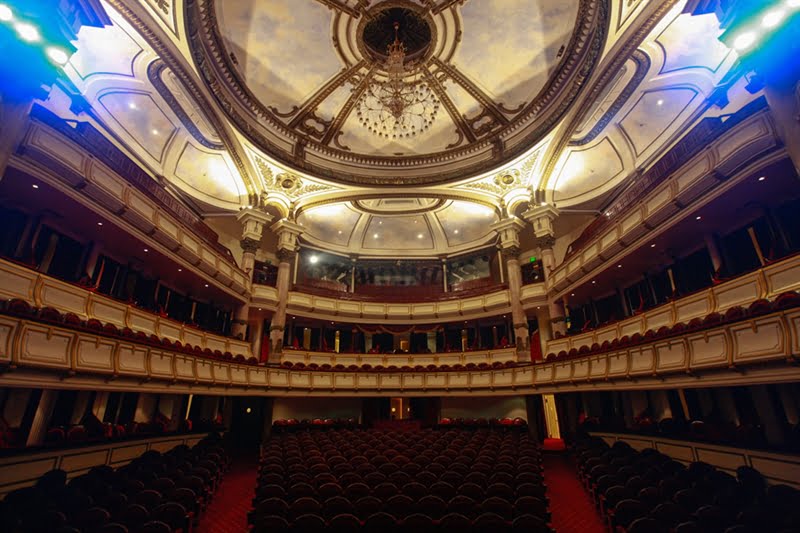
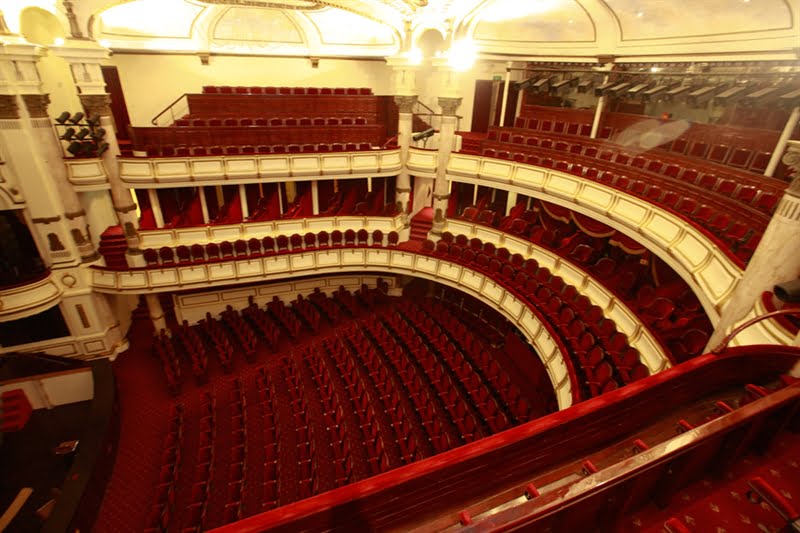
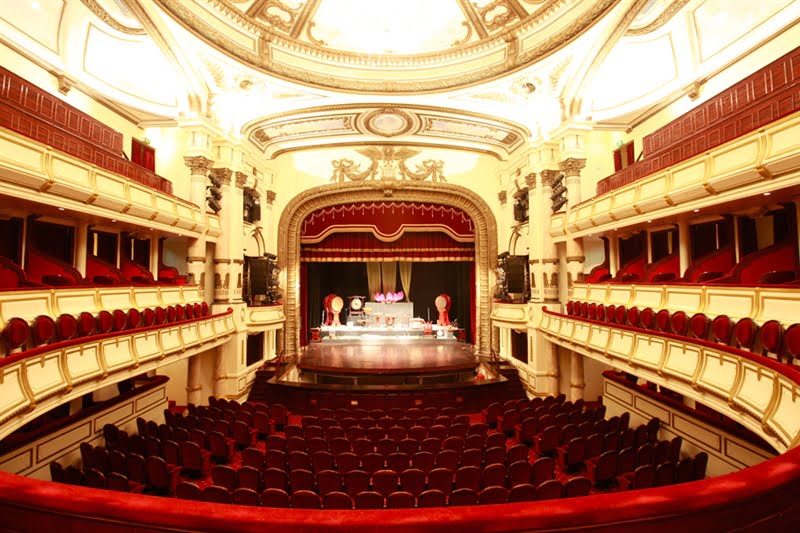
After nearly a hundred years of use, the Theatre has greatly degraded. The space inside: from decoration, materials, color, amenities and important technical equipments has become outdated, no longer true to the standards of the international shows. The space outside, there have been increasingly the construction works that are inconsistent and easily break the architectural space of the Theatre. So Hanoi Opera House needs to be upgraded and renovated broader and more comprehensive to meet as a cultural center of Hanoi and the whole Southeast Asia also.
Hanoi Opera House is a unique structure with its outstanding values in terms of history, culture, architecture and art. It is a unique component of the urban and capital architecture, contributing to our country face today in the field of culture, creating the necessary prerequisites for expansion of cultural exchange on the way of economic and social development today, especially in the struggle to revive the national culture.
